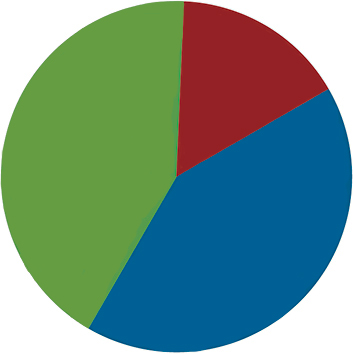Time to prioritize the increasing prevalence of Alzheimer's disease
That is the message delivered by a cross-party and cross-country trio of young Members of the European Parliament (MEPs) in a new video to raise awareness for the cause.
Alzheimer’s disease (AD) is a growing global health challenge affecting those living with the disease and their families.3,4
According to the World Health Organization (WHO), tens of millions of people worldwide live with AD, and this number will grow in the years ahead, outpacing the health and social care resources needed to manage it. Someone in the world develops AD or another form of dementia every three seconds.4 AD and other forms of dementia are now among the top 10 causes of death worldwide, ranking 3rd in both the Americas and Europe in 2019.5,6
Europe’s
“Silent Epidemic”
60-80%
60-80% of total dementia cases worldwide are caused by AD3
14.1M
In Europe, an estimated 14.1 million people are living with dementia9
2ND
Europe has the second highest prevalence of dementia worldwide9
2x
AD incidence is almost double in women than in men8
The number of people affected by Alzheimer's disease (AD) is expected to rise along with the rises in aging populations and life expectancies. AD is regarded as one of the costliest diseases to society.7
In Europe, an estimated 14.1 million people were living with dementia in 2019. This accounts for the second highest prevalence worldwide. Furthermore, AD and dementia were estimated to collectively cost Europe, US$439 billion while global costs were estimated at US$1.3 trillion.9 These costs seem to be driven mostly by social care, and informal care costs due to loss of productivity by both patients and caregivers:
16% of the vast financial costs of AD are attributed to medical costs (e.g., medical practitioner visits, hospital care, medical treatment/medications, etc.)7
41.7% are attributed to indirect/informal costs, in the form of unpaid work of informal caregivers (e.g., family members), which could mean loss of productivity as well as a reduction in financial savings.7
42.3% are attributed to social/non-medical costs (such as community and social services, private and public funding care, homecare, special accommodations, pension income, welfare support, and household expenses).7
The Global Burden of Alzheimer’s Disease
Medical
costs
Indirect
costs
Social
costs

Adapted from Gustavsson A, et al. 20207
The burden that AD poses on healthcare and social care systems, as well as the burden on the individual patients and their caregivers is significant.7 Therefore, policy leadership, commitment and action is needed to address AD in order to optimise quality of care and support for patients, their caregivers, and their families.
WHAT'S NEXT
Addressing Alzheimer’s Disease in Europe
A timely detection and accurate diagnosis of Alzheimer's disease can reduce the burden on society and healthcare systems.
